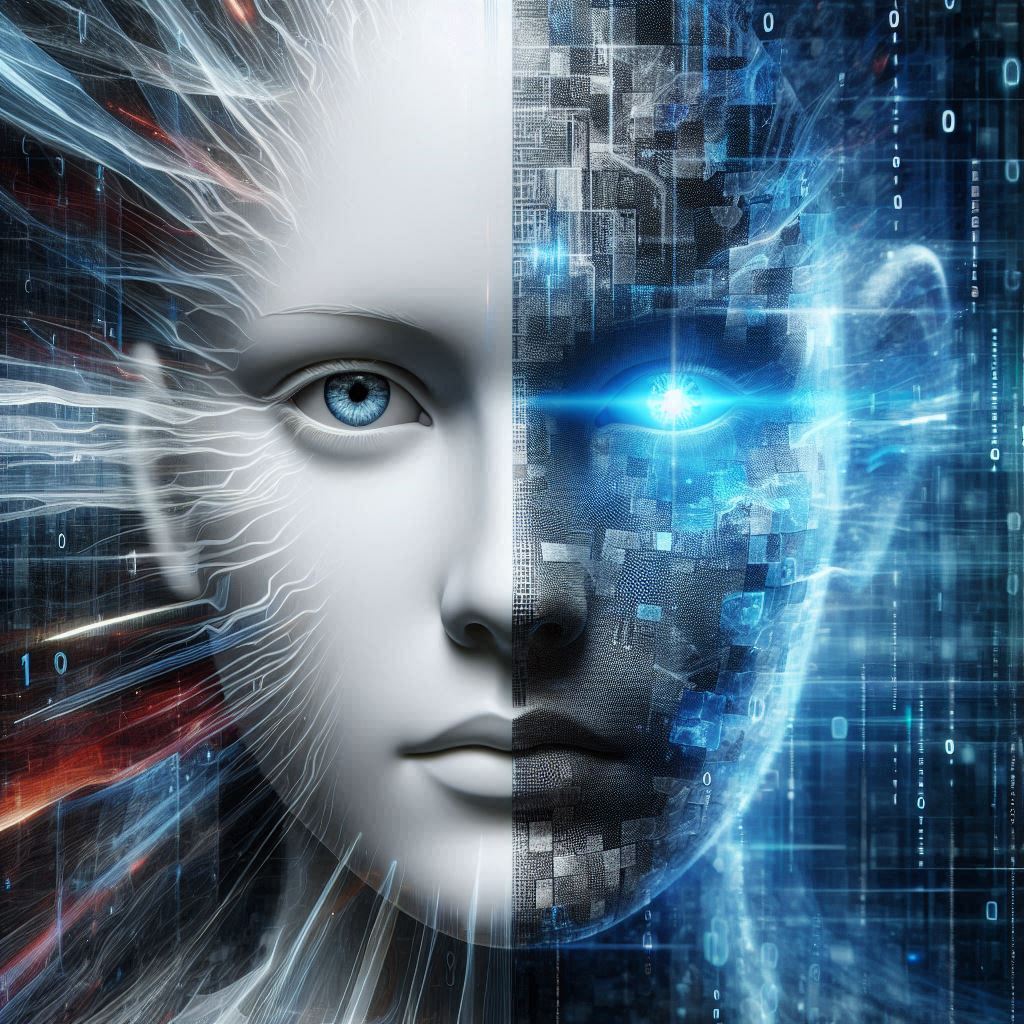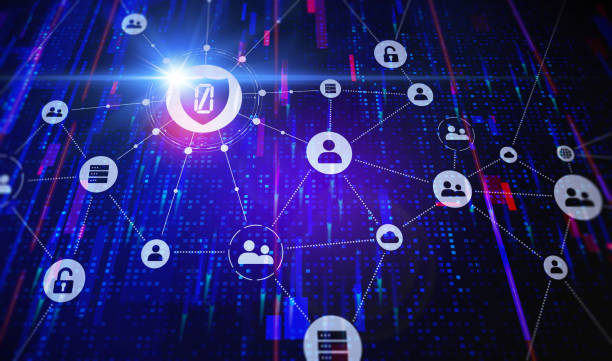Artificial intelligence has become woven into the fabric of modern life. From recommendation systems and voice assistants to hiring algorithms and medical diagnostics, AI now influences how we work, communicate, and make decisions. Yet as the power and presence of AI expand, so too does awareness of one of its most complex and troubling characteristics—bias.
Bias in AI is not merely a technical flaw; it is a mirror reflecting the imperfections of human society. It arises when systems trained to be “objective” inherit the prejudices, inequities, and blind spots embedded in the data or processes used to create them. The results can be subtle or devastating: job candidates unfairly filtered out, minority groups misidentified by facial recognition, or language models perpetuating harmful stereotypes.
Understanding bias in AI requires a deep exploration of what bias is, how it manifests within algorithms, and what can be done to mitigate it. This discussion touches not only computer science and data ethics but also sociology, law, and philosophy.
The Meaning of Bias in Artificial Intelligence
At its simplest, bias refers to a systematic deviation from fairness, objectivity, or accuracy. In everyday language, bias describes a tendency or inclination that skews judgment. In the context of AI, bias refers to patterns within algorithms that produce outcomes that favor or disadvantage certain groups in ways that are unjustified.
However, not all bias is inherently bad. In statistics and machine learning, “bias” has a technical meaning related to model assumptions. A biased estimator, for example, may systematically overestimate or underestimate a quantity. This form of bias is often intentional and serves as a tradeoff to reduce variance or improve generalization.
The ethical problem arises when AI bias leads to unfair treatment—when an algorithm disproportionately harms or benefits individuals based on attributes such as race, gender, socioeconomic status, or nationality. This ethical bias is what policymakers, researchers, and advocates seek to understand and prevent.
Bias in AI therefore sits at the intersection of mathematics and morality. It is not simply an error in computation but a question of justice and social responsibility.
The Origins of Bias in AI Systems
AI systems learn from data, and data reflects the world. Unfortunately, the world is not neutral. It contains historical injustices, structural inequalities, and cultural prejudices that are inevitably encoded into the information we produce. When machine learning models train on such data, they absorb and replicate these biases, often amplifying them through automated decision-making.
Bias can emerge from multiple sources. The first is data collection. If the data used to train a model is incomplete, unrepresentative, or skewed toward certain demographics, the resulting system will reflect those distortions. A facial recognition algorithm trained primarily on images of light-skinned individuals, for example, will perform poorly on darker-skinned faces.
The second source is labeling bias. Machine learning often relies on humans to label or categorize data. These labels may carry implicit assumptions or stereotypes. For instance, if human annotators associate leadership qualities predominantly with men, an AI system trained on such data may learn to prefer male candidates in hiring contexts.
A third source of bias lies in algorithm design and feature selection. The mathematical models and features chosen by engineers can inadvertently encode subjective values. Decisions about which variables to include, how to weigh them, or how to define “success” can introduce hidden value judgments.
Finally, deployment bias occurs when AI systems are used in contexts for which they were not designed. A predictive policing algorithm developed in one city may produce distorted results when applied to another with different demographics or crime patterns. Even a technically sound model can become biased if misapplied in the real world.
Historical Roots of AI Bias
The phenomenon of biased computation is not new. Even before the rise of modern AI, computer systems exhibited forms of social and structural bias. Early examples include credit scoring algorithms that penalized applicants from certain zip codes, indirectly correlating with racial segregation, or risk assessment tools in criminal justice that overpredicted recidivism for Black defendants.
These examples reveal a crucial truth: technology does not exist in isolation. It emerges from and operates within human institutions shaped by history and power. AI systems, despite their sophistication, cannot escape the influence of their creators’ assumptions and societal context.
This insight has deep implications for how we think about fairness. It reminds us that algorithmic bias is not merely a computational accident—it is a reflection of broader social systems that produce unequal outcomes long before machines become involved.
The Mechanics of Machine Learning Bias
Machine learning models learn patterns from data through statistical optimization. They minimize a loss function—a mathematical measure of how far predictions deviate from the correct answers. However, if the training data contains hidden correlations or imbalances, the model may internalize these patterns as “truth.”
For example, a hiring algorithm trained on historical employment data might observe that past executives were predominantly male. The model, unaware of the social forces behind this pattern, may infer that maleness correlates with leadership potential. When deployed, it continues this bias, filtering out qualified women.
Bias also emerges through sampling errors. If certain groups are underrepresented in the training dataset, the model’s performance for those groups will suffer. In natural language processing, this manifests as language models producing less accurate outputs for underrepresented dialects or cultural contexts.
Even the metrics used to evaluate performance can be biased. A classifier optimized for overall accuracy may appear effective but perform disproportionately worse on minority subgroups. Without fairness-aware evaluation, such disparities remain hidden, giving a false sense of objectivity.
Types of Bias in AI
Bias in AI manifests in various forms, often overlapping. Representation bias occurs when the data fails to capture the diversity of real-world populations. Measurement bias arises when the features used to represent individuals—such as test scores, income, or arrest records—do not accurately reflect true qualities or potential.
Label bias happens when training labels reflect subjective judgments. For example, if “good employee” labels are based on historical performance evaluations tainted by discrimination, the model inherits those prejudices. Aggregation bias appears when a single model is used across heterogeneous groups, assuming uniformity where differences matter.
Confirmation bias can also infect the AI development process itself, as researchers interpret results in ways that align with their expectations. Automation bias, on the other hand, occurs when users overtrust AI outputs, assuming machine recommendations must be correct even when they reflect underlying prejudice.
These categories show that bias is not confined to one stage of the AI pipeline; it permeates the entire lifecycle—from data gathering to algorithm design to user interaction.
Real-World Consequences of Biased AI
The impacts of biased AI are not abstract. They affect people’s lives in tangible and often harmful ways. In healthcare, biased algorithms can lead to unequal treatment. Studies have shown that predictive models used to allocate medical resources often underestimate the needs of Black patients because they rely on past healthcare spending as a proxy for health—a measure skewed by systemic inequality in access to care.
In criminal justice, risk assessment tools such as COMPAS have been criticized for assigning higher recidivism scores to Black defendants than to white defendants with similar records. These scores influence sentencing and parole decisions, perpetuating cycles of discrimination under the guise of algorithmic objectivity.
Facial recognition technologies have also come under scrutiny. Research by the MIT Media Lab found that commercial systems from major companies had error rates below 1% for white men but over 30% for darker-skinned women. When deployed in law enforcement, such disparities can lead to wrongful arrests and violations of civil rights.
In employment and finance, biased AI can deny opportunities or credit to marginalized groups. Algorithms that screen resumes, predict loan defaults, or personalize ads can inadvertently exclude qualified individuals based on demographic proxies embedded in data.
These examples demonstrate that AI bias is not just a technical issue—it is an ethical crisis with social, economic, and political dimensions.
The Feedback Loop of Bias Amplification
AI bias does not exist in isolation; it interacts with society in feedback loops. When biased algorithms are deployed, they influence human behavior, which in turn generates new data that reinforces the bias.
Consider predictive policing systems. If an algorithm disproportionately directs police patrols to certain neighborhoods based on historical arrest data, it will produce more arrests in those areas, confirming its original assumption that those neighborhoods are high-crime zones. The cycle continues, embedding discrimination into data-driven governance.
Similarly, biased hiring algorithms that favor certain demographics shape the workforce, leading to future data that reflects the same imbalance. These self-perpetuating loops make bias not just a problem of fairness but of stability—systems risk locking society into patterns of inequality.
Breaking these loops requires conscious intervention, transparency, and continuous monitoring. Without them, bias becomes self-sustaining, masquerading as evidence-based truth.
The Role of Explainability and Transparency
One of the challenges in addressing AI bias is the opacity of machine learning models. Deep neural networks, in particular, are often described as “black boxes” whose decision-making processes are difficult to interpret. This lack of explainability complicates the detection and correction of bias.
Explainable AI (XAI) aims to make algorithmic decisions more interpretable. Techniques such as feature attribution, counterfactual reasoning, and model distillation allow researchers to understand which variables influenced a given prediction. By revealing how decisions are made, XAI can expose patterns of unfairness and support accountability.
Transparency must also extend beyond the technical level. Organizations need to document datasets, design choices, and known limitations. “Model cards” and “datasheets for datasets” are emerging practices that provide standardized documentation describing model behavior, intended uses, and ethical considerations.
However, transparency alone is not enough. Simply exposing bias does not eliminate it. Real progress requires embedding fairness into the design process from the start.
Ethical and Legal Dimensions of AI Bias
AI bias sits at the intersection of ethics and law. Ethically, biased systems violate principles of justice, equality, and autonomy. They treat individuals not as unique persons but as members of statistical categories, often in ways that reproduce discrimination.
Legally, the implications vary by jurisdiction. In the European Union, the General Data Protection Regulation (GDPR) grants individuals rights against automated decision-making that significantly affects them. In the United States, anti-discrimination laws such as the Civil Rights Act, Fair Credit Reporting Act, and Equal Employment Opportunity statutes apply to algorithmic systems, though enforcement remains complex.
Internationally, debates continue about whether new frameworks are needed to govern AI fairness. Organizations such as UNESCO and the OECD have proposed ethical guidelines emphasizing transparency, accountability, and inclusiveness. Yet practical implementation lags behind, as policymakers struggle to keep pace with rapid technological change.
The legal system faces unique challenges in defining fairness mathematically. Should algorithms strive for equal outcomes, equal opportunities, or equal accuracy across groups? Each definition reflects different philosophical values, and achieving one may undermine another. These tensions illustrate that fairness is not purely technical—it is a moral choice about the kind of society we want technology to serve.
Addressing Bias in AI Development
Mitigating AI bias requires intervention throughout the entire lifecycle of system design. It begins with recognizing that fairness cannot be added as an afterthought.
During data collection, ensuring diversity and representativeness is essential. This may involve balancing datasets, augmenting underrepresented groups, or removing features that act as proxies for protected attributes. In labeling, awareness training for annotators and auditing of labeling practices can reduce subjective bias.
In algorithm design, fairness-aware learning techniques can constrain models to minimize disparities in outcomes. Regularization methods, adversarial debiasing, and reweighting strategies help models treat groups more equitably. Evaluation must go beyond accuracy to include fairness metrics, such as demographic parity or equalized odds.
Organizational culture also plays a critical role. Interdisciplinary collaboration between data scientists, ethicists, and affected communities fosters broader understanding of the real-world implications of algorithmic decisions. Continuous auditing and feedback loops ensure that fairness remains a living commitment, not a one-time goal.
The Role of Diversity in AI Teams
Bias in AI often reflects the lack of diversity among those who build it. Homogeneous teams may fail to anticipate how technology impacts groups different from themselves. Increasing diversity within AI research and engineering teams is therefore a powerful step toward reducing bias.
Diverse perspectives challenge assumptions, question blind spots, and introduce alternative frameworks for fairness. Representation in AI development is not just about inclusion; it is about epistemic strength—the ability to see and design for a wider range of human experiences.
Educational programs that integrate ethics, social science, and critical thinking into computer science curricula can also help. The future of fair AI depends not only on algorithms but on the moral imagination of those who create them.
The Economic and Social Incentives for Fair AI
Addressing bias is not merely a moral imperative; it is an economic one. Organizations that deploy biased AI risk reputational damage, legal liability, and loss of consumer trust. Conversely, fairness can become a competitive advantage, differentiating companies that prioritize ethical innovation.
Bias reduction also contributes to social stability. When technology amplifies inequality, it erodes public confidence in institutions and fuels polarization. Conversely, equitable AI systems can enhance participation, expand access, and democratize opportunity.
As the digital economy grows increasingly dependent on AI, fairness becomes a prerequisite for sustainable innovation. Ethical technology is not an obstacle to progress—it is the foundation of legitimacy in a data-driven world.
The Future of Bias and Algorithmic Justice
The struggle against bias in AI is ongoing and evolving. As new technologies like generative AI, reinforcement learning, and autonomous systems emerge, fresh forms of bias will appear. AI models trained on internet-scale data inherit the full spectrum of human prejudice expressed online—racism, sexism, political bias, and misinformation.
Future solutions must go beyond patching datasets or tweaking algorithms. They will require systemic change: new norms for data governance, participatory oversight, and shared accountability. Researchers are exploring “algorithmic justice” frameworks that blend computational fairness with human rights principles.
AI ethics is moving toward co-design—building systems with communities rather than for them. This participatory approach ensures that marginalized voices shape the rules that govern technology.
Ultimately, the goal is not to create perfectly unbiased AI, which may be impossible, but to build systems that are transparent, accountable, and responsive to human values. Fairness in AI is not a fixed destination but a continuous process of reflection, correction, and engagement.
Conclusion
Bias in AI reveals a fundamental truth: technology does not exist apart from humanity; it is a reflection of it. The prejudices and power structures embedded in society inevitably find their way into the data and algorithms we create. The challenge of AI fairness, therefore, is as much about improving machines as it is about improving ourselves.
By understanding how bias arises, acknowledging its consequences, and committing to ethical design, we can guide artificial intelligence toward a future that amplifies human potential rather than human inequality. The work requires vigilance, humility, and collaboration across disciplines and cultures.
AI may never be perfectly fair, but it can become more just. In doing so, it can serve not as a mirror of our flaws but as a testament to our capacity for reflection, responsibility, and change.






